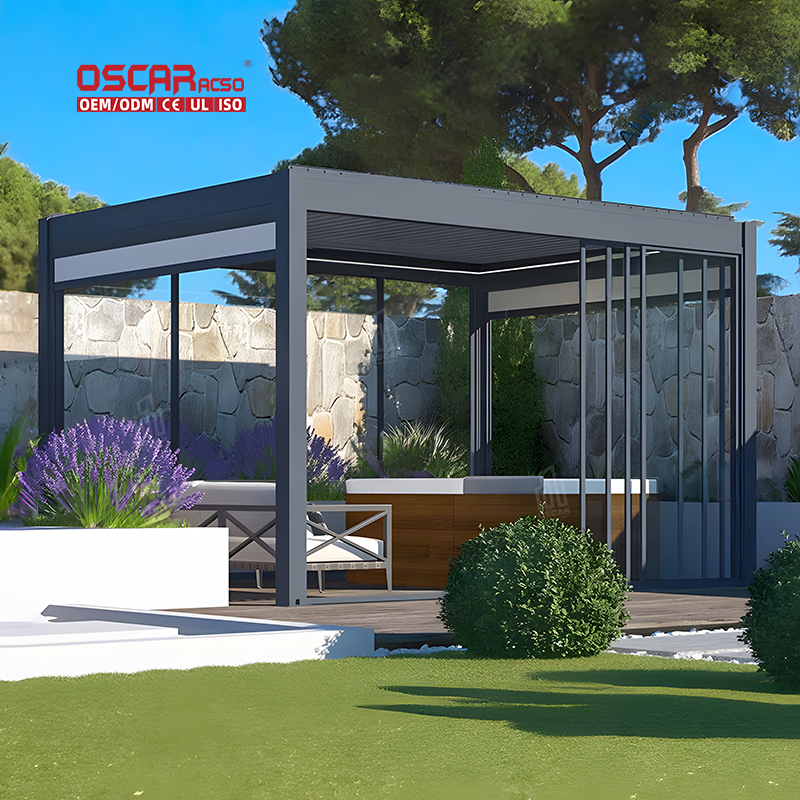Attached Pergolas: Yes, You Can! Transform Your Home\’s Outdoor Living Space
Imagine seamlessly stepping from your living room into a shaded, elegant outdoor retreat 🏡. This dream is achievable by ...

Imagine seamlessly stepping from your living room into a shaded, elegant outdoor retreat 🏡. This dream is achievable by attaching a pergola directly to your house. Yes, a pergola can absolutely be attached to a house, and it’s a brilliant way to enhance your property’s value, aesthetics, and functionality. This integration creates a perfect blend of indoor comfort and outdoor freedom, making your home the ultimate haven for relaxation and entertainment.
🌟 Why Attach a Pergola to Your House? Key Benefits
Attaching a pergola to your home isn’t just about adding a structure; it’s about creating a new living experience. The benefits are compelling:
- •
Enhanced Indoor-Outdoor Flow: An attached pergola creates a seamless transition from your interior to your exterior spaces. It effectively becomes an extension of your living room, perfect for entertaining or enjoying a quiet meal while feeling connected to your garden .
- •
Increased Usable Space: Gain a functional outdoor room for dining, lounging, or simply unwinding. It defines a specific area for activities, making your yard feel larger and more organized .
- •
Boosted Curb Appeal & Property Value: A well-designed pergola adds a touch of architectural elegance to your home. It’s a sought-after feature that can significantly increase your property’s marketability and value .
- •
Structural Stability: By utilizing your home’s existing wall for support, an attached design often requires fewer posts and can feel more稳固 than a freestanding one, provided it’s installed correctly .
⚠️ Crucial Considerations Before You Build
Before diving into this exciting project, several important factors must be addressed to ensure a safe, legal, and long-lasting result.

- •
Structural Integrity: This is paramount. You must ensure your home’s wall can support the additional weight of the pergola. The attachment must be made to the home’s framing studs, not just the siding or cladding. Brick homes may require special supporting structures like lintels .
- •
Local Building Codes & Permits: Always check with your local building department for regulations and permit requirements. While many attached pergolas fall under “permitted development,” rules vary. Factors like size, height, and your home’s location (e.g., in a conservation area) can affect what’s allowed .
- •
Water Management & Protection: A poor installation can lead to water damage on your home’s exterior. Installing flashing above the ledger board is critical to seal the junction and prevent water from seeping behind the attachment point and causing rot or mold .
- •
Material Selection: Choose materials that complement your home’s style and can withstand your local climate. Pressure-treated wood is classic but requires maintenance, while aluminum or vinyl offer modern, low-maintenance durability .
🛠️ How to Attach a Pergola: Key Methods Explained
The attachment method is the heart of the project. Here are the most common and effective techniques.
The Ledger Board Method (Most Common & Recommended)
This is the standard and most secure approach. A ledger board is a horizontal timber that is first securely bolted to your home’s wall framing. The pergola’s beams then attach to this board.
- •
Process: Locate the wall studs, mark the board’s position, install flashing, and secure the board with large lag bolts drilled into the studs. This ensures the weight is properly distributed and supported .
.jpg)
The Fascia Mount Method
This involves attaching the pergola to the fascia board under your roof’s eaves. It’s less invasive to the siding but requires a very strong fascia and underlying roof structure to be safe. Consult a professional to assess if this method is viable for your home .

Professional Help is Wise: Given the complexities of load-bearing and waterproofing, hiring a licensed contractor is often a smart investment. They can ensure the structure is safe, compliant with codes, and properly sealed .
💡 Design Inspiration and Functional Upgrades
An attached pergola is a blank canvas for your personal style and functional needs.
- •
Roof Options: While classic open rafters offer partial shade, consider retractable canopies or louvered roof systems for adjustable sun and rain protection .
.jpg)
- •
Create an Outdoor Room: Define the space with outdoor rugs, weather-resistant furniture, and ambient lighting like string lights or integrated LEDs. Adding outdoor curtains or shade screens can provide extra privacy and protection from the elements .
- •
Embrace Nature: Train climbing plants like wisteria or clematis up the posts and across the rafters. This creates a beautiful, living canopy that blooms and changes with the seasons .
🔧 Maintenance for Longevity
To keep your attached pergola looking beautiful and structurally sound for years, regular upkeep is essential.
- •
Annual Inspections: Check all connections, bolts, and brackets for tightness. Look for any signs of wear, rust, or wood rot, especially at the critical house attachment point .
- •
Clean Regularly: Wash the structure to remove dirt, debris, and organic matter that can trap moisture and lead to deterioration .
- •
Reapply Protective Finishes: For wood pergolas, restain or reseal the wood every few years to protect it from moisture and UV damage .
Attaching a pergola to your house is a fantastic way to invest in your home and your lifestyle. It challenges you to think about construction and design, but the reward is a versatile, beautiful outdoor room that expands your living space and connects you more deeply with your garden. The key is meticulous planning, prioritizing a waterproof connection, and not cutting corners on structural integrity. When done right, it becomes the heart of backyard enjoyment for years to come.

